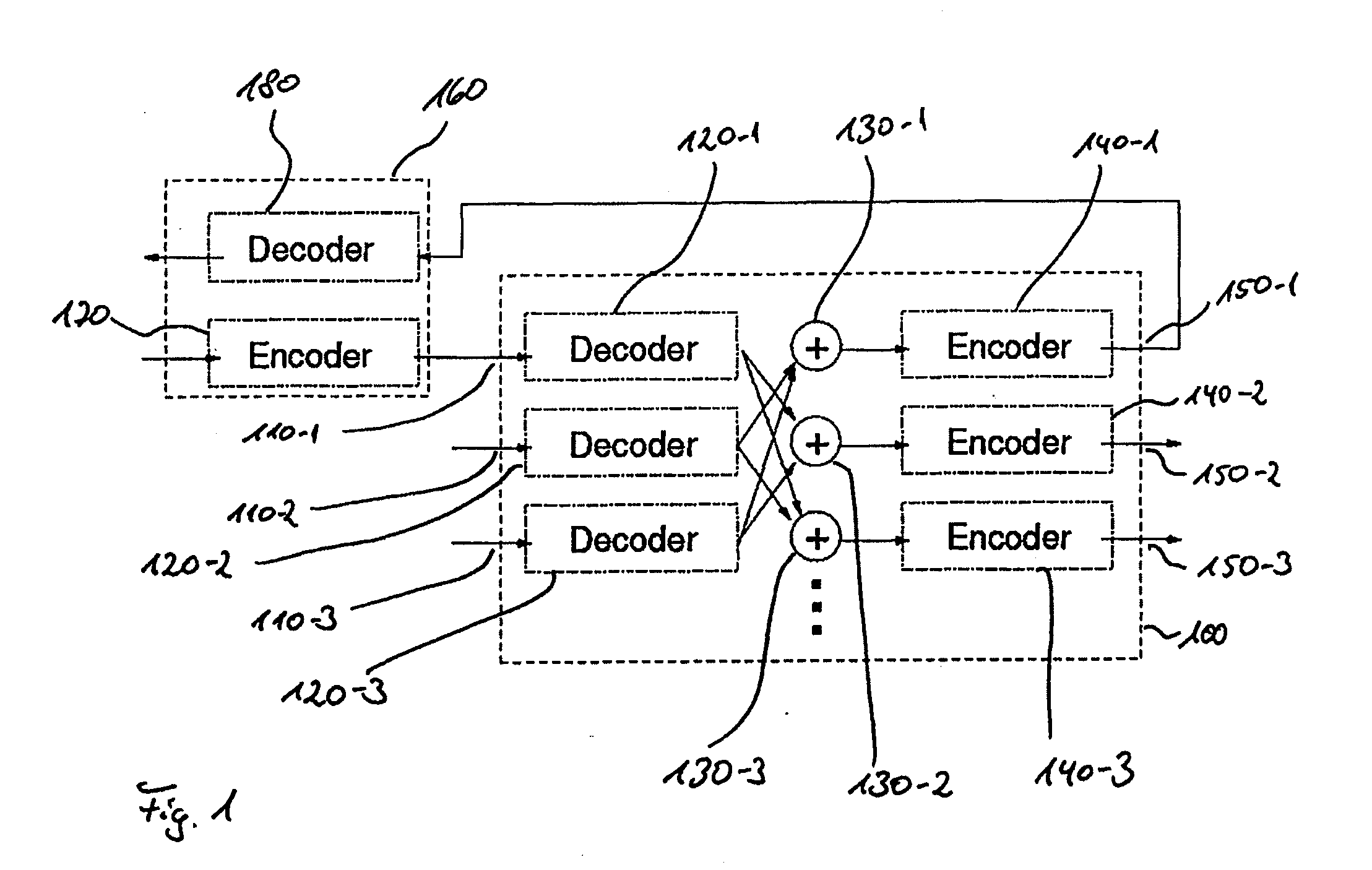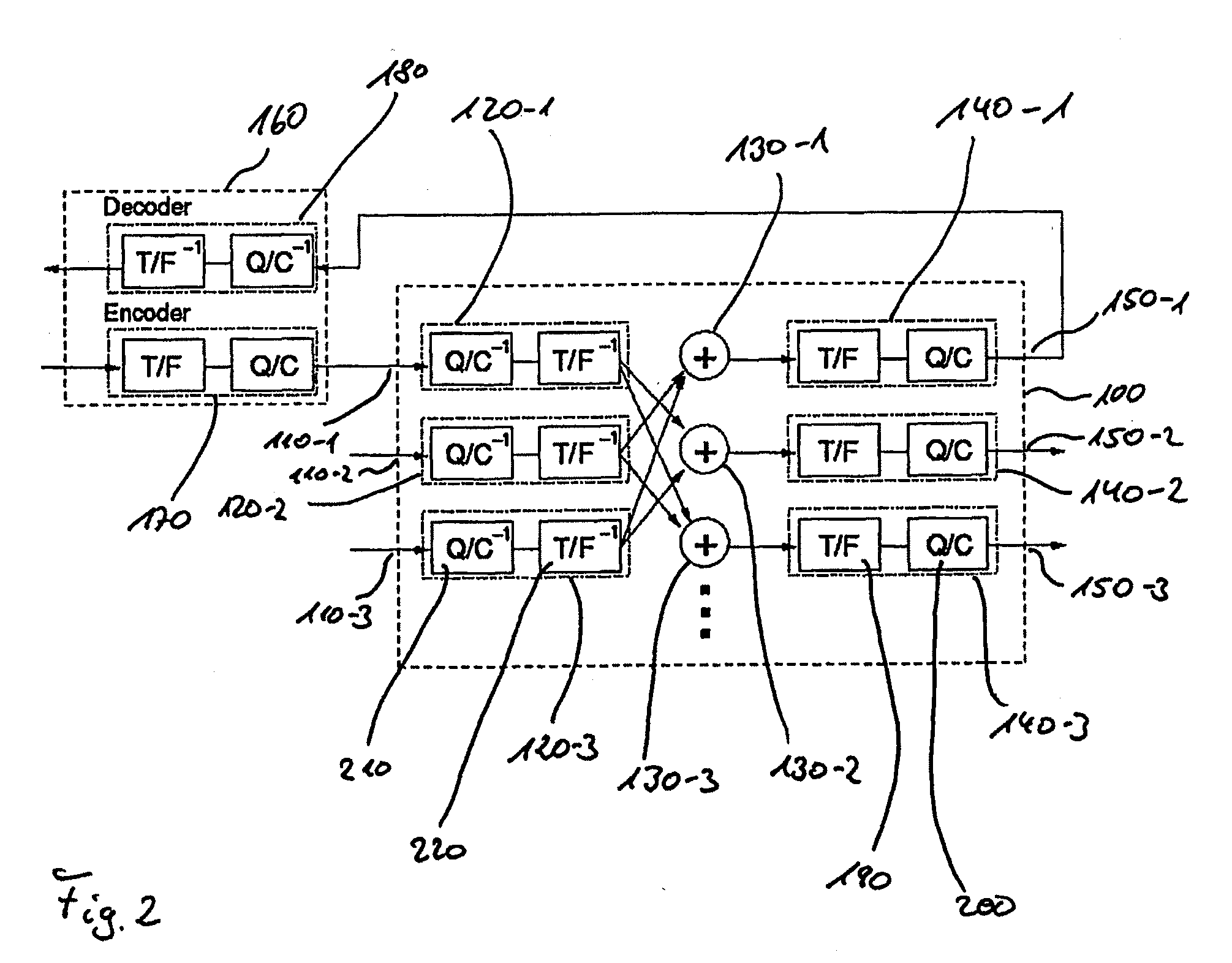Apparatus for Mixing a Plurality of Input Data Streams
a technology of input data and apparatus, applied in the direction of electrical apparatus, speech analysis, transmission, etc., can solve the problems of affecting the quality of achievable systems employing modern techniques, introducing quantization noise into the signal to be processed, and affecting the availability of bandwidth and delay, so as to reduce computational complexity and computational complexity. the effect of complexity
- Summary
- Abstract
- Description
- Claims
- Application Information
AI Technical Summary
Benefits of technology
Problems solved by technology
Method used
Image
Examples
Embodiment Construction
[0042]With respect to FIGS. 4 to 10, different embodiments according to the present invention will be described in more detail. However, before describing these embodiments in more detail, first with respect to FIGS. 1 to 3, a brief introduction will be given in view of the challenges and demands which may become important in the framework of conferencing systems.
[0043]FIG. 1 shows a block diagram of a conferencing system 100, which may also be referred to as a multi-point control unit (MCU). As will become apparent from the description concerning its functionality, the conferencing system 100, as shown in FIG. 1, is a system operating in the time domain.
[0044]The conferencing system 100, as shown in FIG. 1, is adapted to receive a plurality of input data streams via an appropriate number of inputs 110-1, 110-2, 110-3, . . . of which in FIG. 1 only three are shown. Each of the inputs 110 is coupled to a respective decoder 120. To be more precise, input 110-1 for the first input data...
PUM
 Login to View More
Login to View More Abstract
Description
Claims
Application Information
 Login to View More
Login to View More - R&D
- Intellectual Property
- Life Sciences
- Materials
- Tech Scout
- Unparalleled Data Quality
- Higher Quality Content
- 60% Fewer Hallucinations
Browse by: Latest US Patents, China's latest patents, Technical Efficacy Thesaurus, Application Domain, Technology Topic, Popular Technical Reports.
© 2025 PatSnap. All rights reserved.Legal|Privacy policy|Modern Slavery Act Transparency Statement|Sitemap|About US| Contact US: help@patsnap.com



